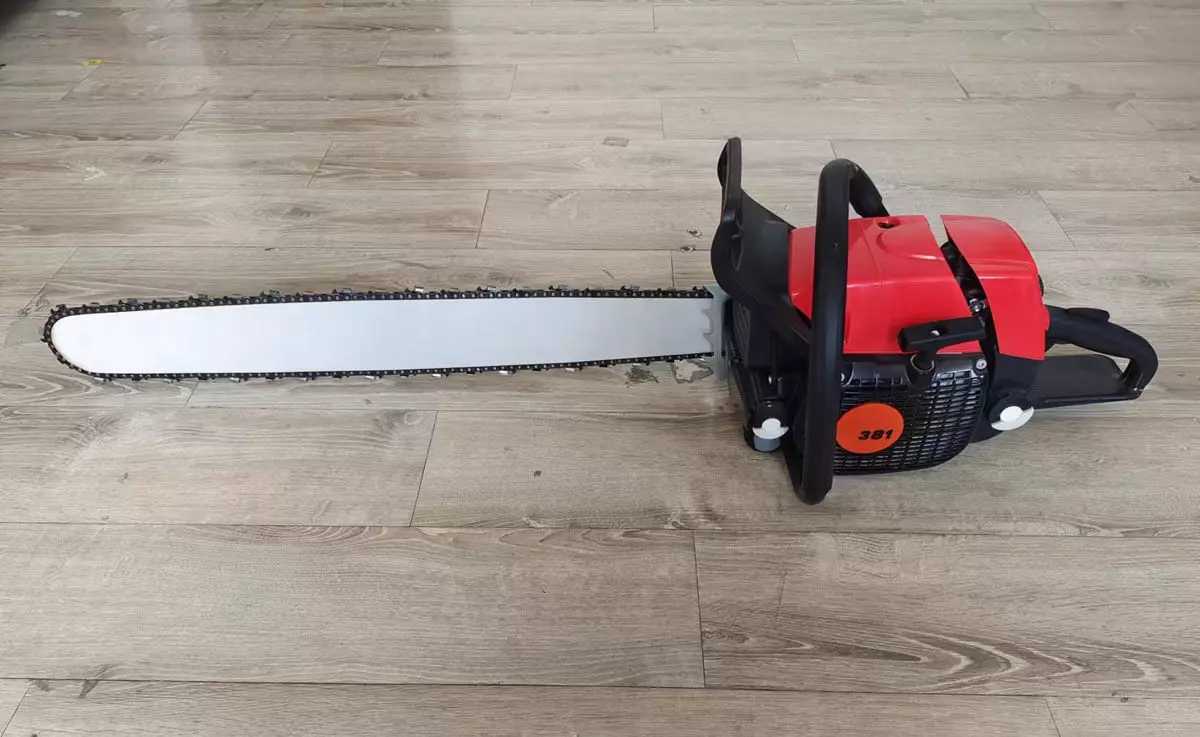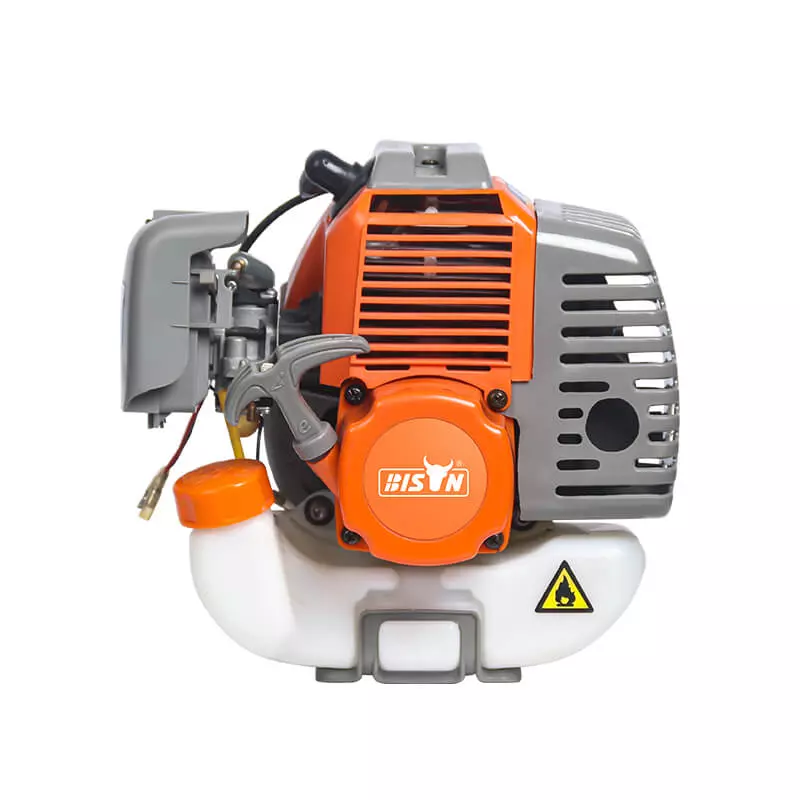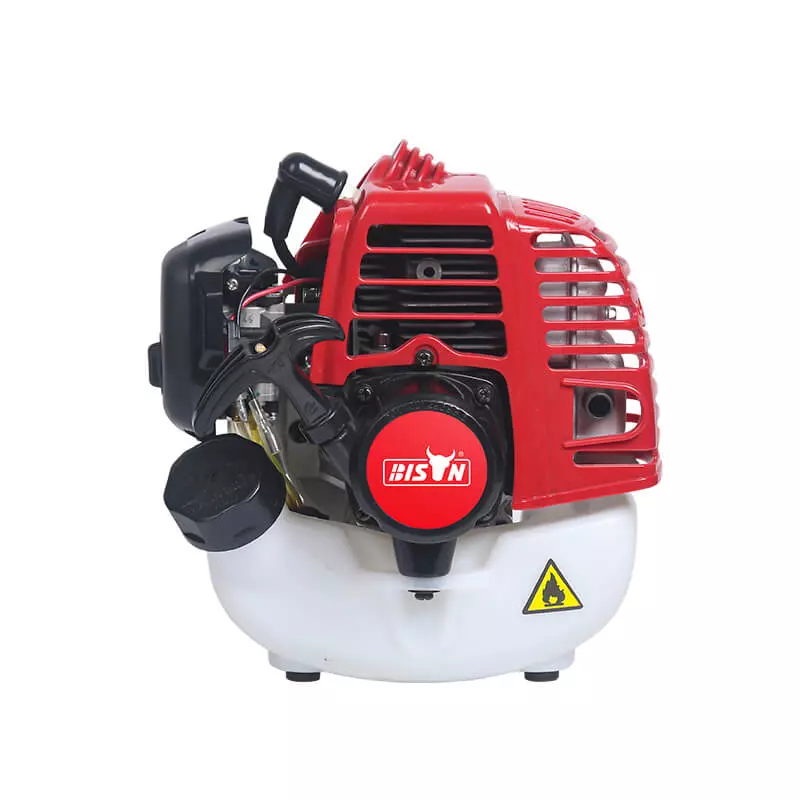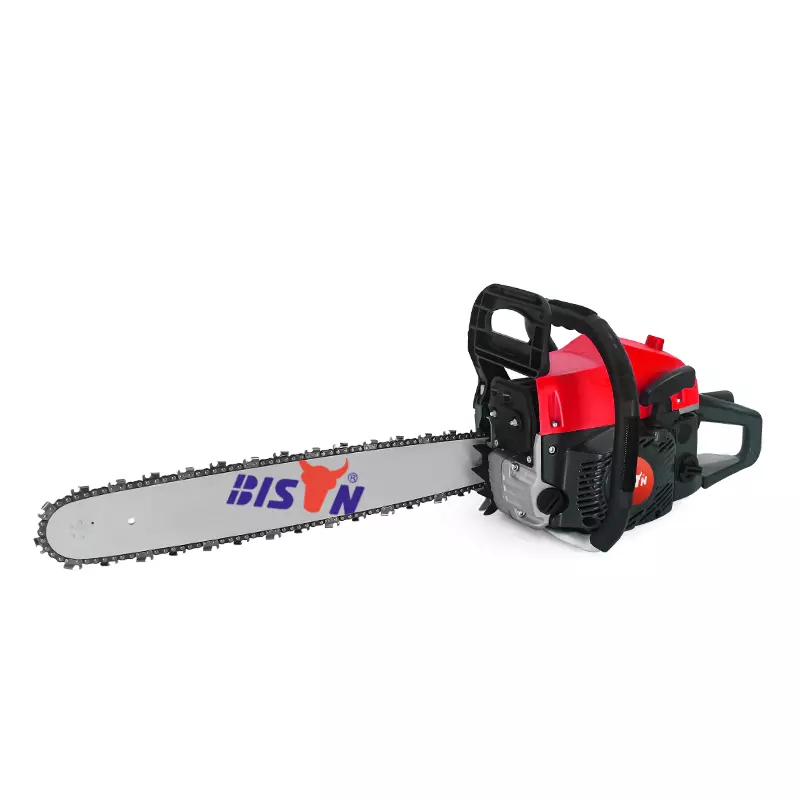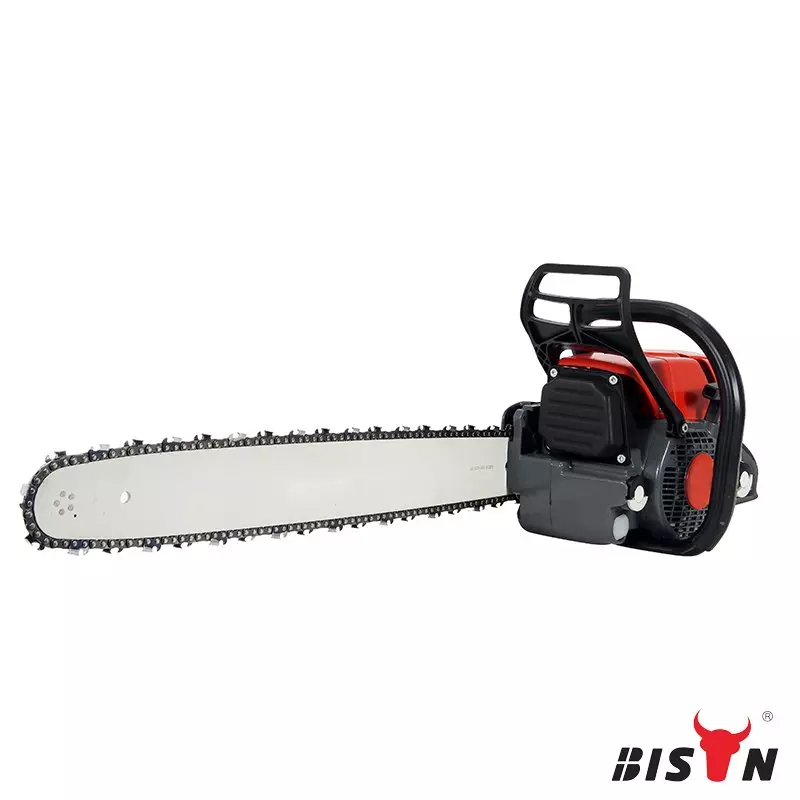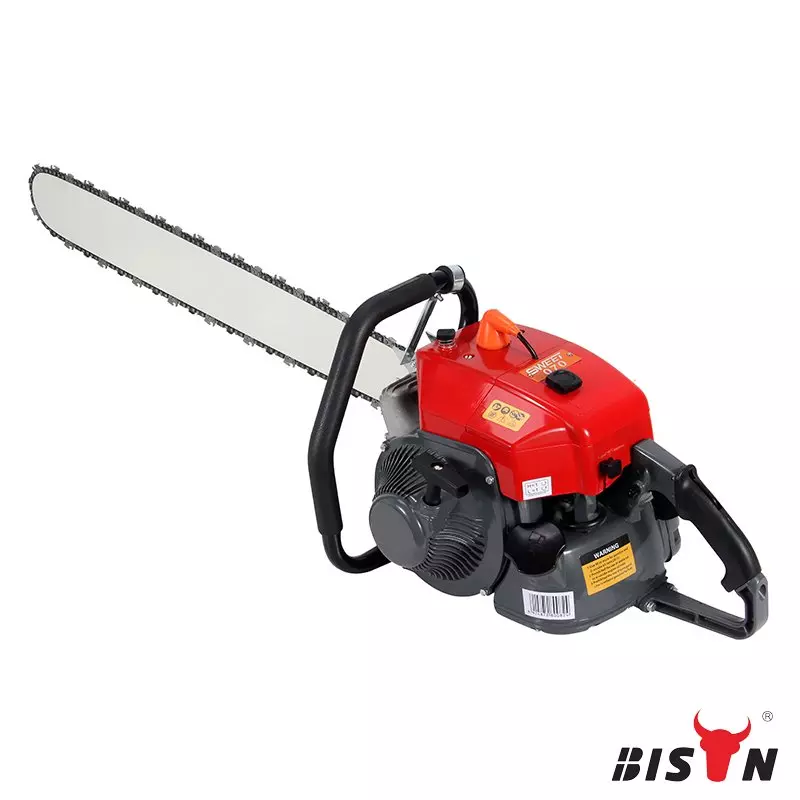Understanding mechanics: How does a chainsaw work?
2024-03-07
Table of content
Have you ever used a chainsaw to cut down an out-of-control tree in your backyard? Or, have you ever had to use a chainsaw to cut firewood as your main source of heat during the long winter months? You may need a chainsaw for recreational or creative purposes.
A chainsaw is essentially a highly specialized, portable mechanical saw with a set of teeth attached to a rotating chain that runs along a guide bar.
Many people use a chainsaw without fully understanding its internal workings. However, understanding how the various parts of a chainsaw interact can mean the difference between an efficient, safe job and potential tool damage or even injury... It is this important correlation and our desire to inspire that forms the purpose of this article. So how does a chainsaw work?
Our goal is to reveal the complex workings of a chainsaw in an easy-to-understand way. In this article, BISON will take a closer look at the major components of a chainsaw, from the engine to the chain, guides, and controls. Let's find out together in this guide.
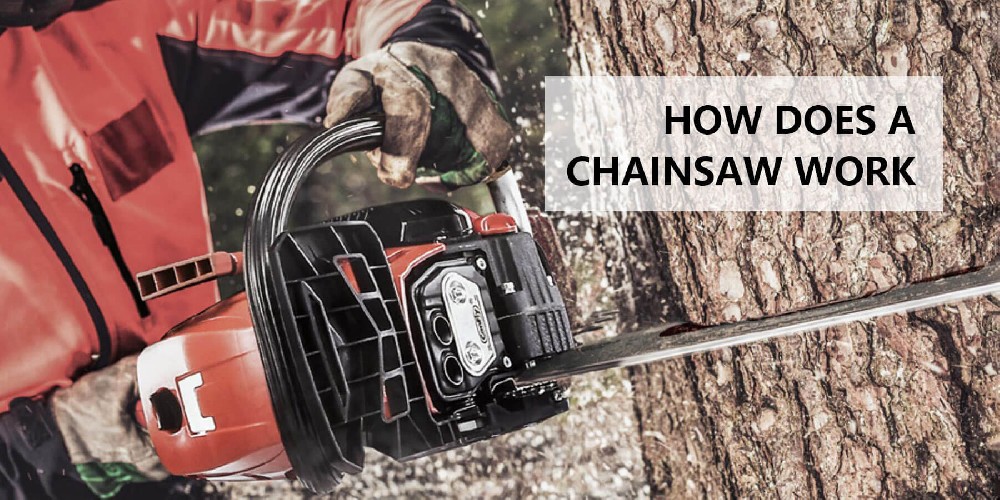
Chainsaw components and how they work
Sometimes, to understand how something works, it's essential to understand precisely what you have in your hands! The engine is powered by a gasoline/oil mixture or a power cord connected to a power outlet. Air is then forced through the carburetor to flow into the chainsaw, powering the guiding bar and chain to rotate in a circular motion. This motion will create enough friction to slice through wood easily.. Understanding the sequence of processes from triggering the throttle to rapid rotation of the chain gives us a vivid understanding of this feat of engineering.
Starting process and engine/motor
The mechanical journey of chain saw operation begins with the engine. To activate the ignition switch, the user pulls hard on the power cord, which subsequently initiates the engine's combustion process.
Besides, there are two styles of chainsaws: those powered by a gasoline-powered motor with an oil pump and ignition or electric chainsaws that must be connected to a stable power source for operation.
Chainsaws typically use a two-stroke gasoline engine to generate electricity. The engine is compact but powerful and runs on a mixture of gasoline and oil. When the power cord is pulled, the engine's major components—pistons, cylinders, crankcase, and spark plugs—come into play. The piston moves within the cylinder, creating a vacuum that draws the gasoline-oil mixture into the crankcase. The mixture then enters the combustion chamber and a spark plug ignites it. The resulting explosion pushes a piston, which turns a crankshaft, creating power for the chainsaw.
The battery-operated chainsaw is new to the market. This chainsaw style is powered by a lithium-ion battery, similar to the one used in a cordless drill. These batteries must be charged frequently and do not have the power that gasoline/oil or electric engines do.
Power transmission and chainsaw clutch
The power generated needs to be transmitted to the main cutting component - the chain. This is where the clutch comes in. The clutch is usually a centrifugal clutch in a chain saw and plays a key role in engaging or disengaging the chain from rotating. As engine speed increases, centrifugal force expands the clutch, connecting the engine to the sprocket and moving the chain. Conversely, when the accelerator is released and the engine speed decreases, the clutch disengages, stopping the movement of the chain. Besides, by engaging the clutch, the operator is additionally protected as it signals the chainsaw to stop in the event of kickback.
Cutting mechanism – guide rod and cutting chain
The movement of the chain brings us to the climax of the chainsaw operation - the cutting process. This involves two key components: the guide rod and the cutting chain.
The guide rod provides a path for the rotating chain while supporting it during the cutting process. Its durability and strength are critical as it can withstand severe mechanical strains and harsh operating conditions.
Wrapped around the guide bar is the cutting chain, each tooth acts as a small chisel. The chain is tensioned correctly, the teeth are sharp, and the rakes are correctly adjusted then, as the chain moves around the bar, each tooth will remove one chip of wood with each pass.
The cutting chain has some main elements.
Teeth (top plate and side plate): The front of the top plate forms the edge of the chisel, the part of the tooth that finishes the cut starting at the corner. The top plate separates the wood chip, allowing it to be pulled out.
Depth gauge: The depth gauge prevents the toothed chisel edge from cutting too far into the wood. The height difference between the rake and the top plate determines the depth the tooth cuts with each pass around the bar.
The efficiency of a chain is directly related to its sharpness and tension. Regular sharpening ensures optimal cutting performance and a properly tensioned chain moves smoothly around the guide bar with no slack or noticeable tightness. In addition, the most important thing is the lubrication process of the chain and guide rods. Chainsaws are equipped with automatic oilers that apply oil to the chain as it rotates, reducing friction and preventing premature wear.
Add-ons and Security
Exactly how a chainsaw works is through the parts above that are driven together to create enough friction to cut through a rigid material easily.However, due to their powerful capabilities, chain saws carry inherent risks and require safety mechanisms. Key safety features include a chain brake, designed to stop chain rotation during kickback and located in the same area as the clutch, and hand guards, designed to protect the user from potential flying debris.
In addition, chain saw operation and control features, such as an ergonomically designed handle and vibration damping system, make operation easier, more comfortable and reduce user fatigue.
Chainsaw maintenance
Regular chainsaw maintenance essentially means regular inspections and ongoing care. It keeps your chainsaw running optimally when you need it and extends the life of the tool by preventing premature wear and damage.
The care you need for your chainsaw depends on how often you use it. If you use your chainsaw every week, you may need to complete some maintenance tasks before each use. Maintenance tasks related to chainsaws can be broadly classified as follows:
Chain Sharpening
Chain Tension
Regular cleaning
replace wear parts
lubrication
FAQs
Will a chainsaw work without a chain?
A chainsaw without a chain is extremely dangerous. Accidents can and do happen, and any hunter who practices with an open bar and a trimming tool will suffer harm.
How does a chainsaw motor work?
An electric chainsaw uses a motor to power a chain and bar that cuts the wood. The electric motor causes the chain and bar to rotate swiftly.
Conclusion
Now that you know what a chainsaw is, how each part works, and what maintenance a chainsaw owner might need. Understanding how a chainsaw works is crucial not only for effective use but also for safety reasons. Chainsaw users should always follow proper safety protocols.
Finally, BISON is a proud manufacturer of high-quality, durable chainsaws designed with cutting-edge technology and a deep understanding of user needs. Our comprehensive range of chainsaws caters for a variety of tasks from light domestic use to heavy-duty professional needs.
We provide our customers with more than just a tool, but a long-term partnership based on superior performance, leading safety features and reliable after-sales service.
Join us today.
